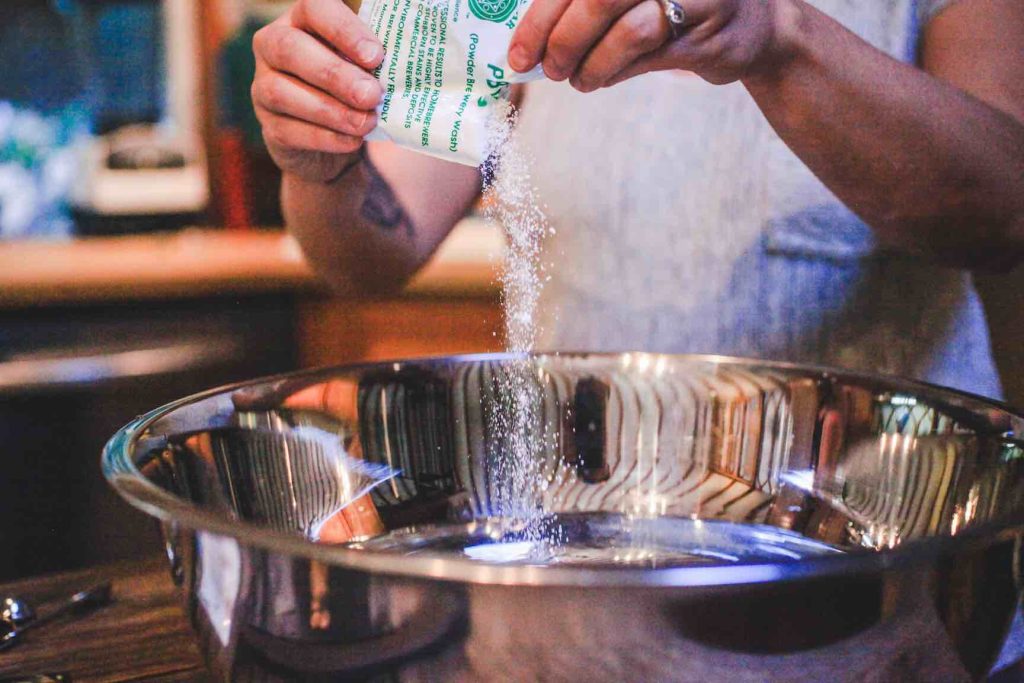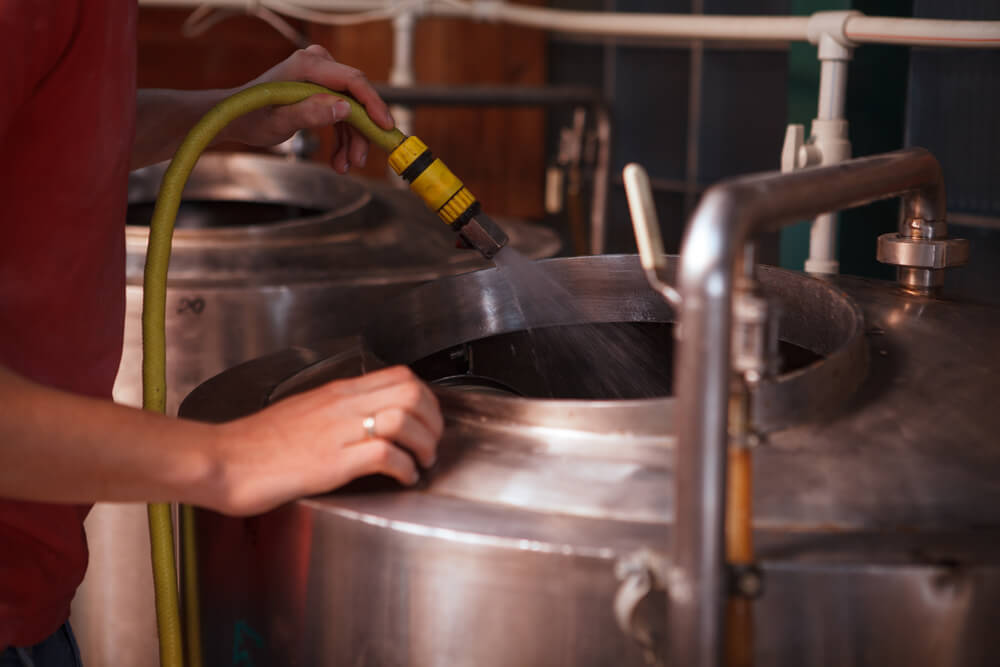A Guide to Cleaning and Sanitizing Home Brewing Equipment
Are you a homebrewing enthusiast? Homemade craft beers are constantly on the rise and more and more people like the idea of making their own signature drink. Homebrewing is a rewarding and enjoyable hobby, allowing individuals to create their own unique and flavorful beers, ciders, and other fermented beverages.
However, one of the most crucial steps to getting a good batch is maintaining proper cleanliness and sanitation throughout the brewing process. And although this might seem onerous and time-consuming, it’s vital for achieving the desired product. Clean and sanitized equipment helps prevent contamination and off-flavours, ensuring that your final product is of the highest quality. Let’s see why proper cleaning and sanitizing your homebrewing equipment is important and what are the steps and best practices to follow.
Why is Cleaning and Sanitizing the Brewing Equipment Important?

Cleanliness and sanitation are paramount in the homebrewing process because they directly impact the quality and safety of the final product. Remember, the sugary liquid that the yeast eats is also very attractive to a lot of microbes so you need proper cleaning and sanitizing equipment to make sure that everything that comes into contact with the beer is microbe-free.
- Prevention of Contamination: Microorganisms, such as wild yeast and bacteria, can easily infiltrate your brewing equipment. These unwanted guests can lead to off-flavours, spoilage, and even the development of unsafe compounds in your beverage.
- • Flavor Consistency: Proper cleaning and sanitizing ensure that your beer or cider maintains the intended flavours, aromas, and characteristics that you’ve carefully chosen for your recipe.
- • Yeast Health: Yeast, a vital component of fermentation, performs optimally in a clean and sanitized environment. Contaminated equipment can stress or harm yeast, potentially leading to incomplete fermentation.
- • Safety: Contaminated beverages can pose health risks if consumed. By maintaining a clean and sanitized brewing environment, you reduce the likelihood of harmful microorganisms affecting your end product.
Cleaning vs. Sanitizing
While cleaning and sanitizing are often used interchangeably, they serve distinct purposes in the homebrewing process.
Cleaning involves physically removing dirt, residue, and organic matter from equipment surfaces. This step is important because sanitisers are more effective on clean surfaces. Use a mild detergent and a soft brush to scrub equipment, such as fermenters, bottles, and hoses.
Sanitizing actually means killing or reducing the number of microorganisms present on surfaces to a safe level. Even after cleaning, some microorganisms may remain. Sanitizing prevents these microbes from interfering with fermentation. Common sanitisers include iodophor, bleach solutions (make sure they are diluted and used with extra attention) , and no-rinse sanitiser.
Step-by-Step Guide

- Gather Your Equipment: Collect all the equipment that will come into contact with your brew, including fermenters, airlocks, siphoning tubes, bottles, and caps., and the necessary cleaning and sanitizing equipment, like bottle sanitizer, a large bucket, brushes, sponges and brewing cleaning supplies.
- Pre-Rinse: Rinse all equipment with hot water to remove large debris and residues. This initial rinse prepares the surfaces for thorough cleaning.
- Cleaning: Use a non-abrasive cleaner or a brewing-specific cleanser to scrub all equipment surfaces. Pay close attention to hard-to-reach areas and intricate parts. A soft brush or cloth will help dislodge stubborn residues. Rinse thoroughly with hot water after cleaning.
- Inspection: After cleaning, inspect equipment for any remaining dirt, stains, or residues. If any are found, repeat the cleaning process until the equipment is visibly clean.
- Sanitizing: Prepare the solution according to the manufacturer’s instructions. Common sanitizers often require a specific dilution ratio. Ensure that all surfaces are in contact with the solution for the recommended duration. Don’t forget small parts like airlock components and bottle caps.
- Drying: Allow sanitized equipment to air-dry in a clean, dust-free area. Avoid touching the sanitized surfaces with your hands as this can introduce contaminants.
- Assembling and Brewing: Once your equipment is dry, assemble your brewing setup and proceed with your recipe. Remember to minimize contact with unsanitized surfaces, and if a step requires prolonged exposure to air (like bottling), do so in a clean environment.
Best Practices
Smaller components are best submerged in a cleaning solution. For the bigger elements, check if there are any parts you can disassemble and spray the rest. Be consistent. Consistency is key to producing safe and delicious beverages.
During the cleaning process, always follow the manufacturer’s instructions. Pay attention to the recommendations given for products to ensure effectiveness and safety. Since there are many pieces in the brewing equipment, try to avoid cross-contamination. Use separate sponges, brushes, and towels. This prevents transferring microbes to already cleaned surfaces. Don’t rush. Proper sanitation takes time. Rushing through this step can compromise the quality of your brew.
Inspect the condition of all components and replace worn equipment. If any equipment becomes scratched, corroded, or difficult to clean, consider replacing it to maintain the integrity of your brewing process. Educate yourself. Try to stay informed and learn about new cleaning and sanitizing techniques and products to stay up-to-date with best practices as well as new ideas on how to brew your own beer.
To Sum Up
Maintaining a hygienic brewing environment is essential for producing high-quality homebrewed beverages. By understanding the importance of cleanliness and sanitation, following a systematic cleaning and sanitizing process, and adhering to best practices, you’ll be well on your way to enjoying delicious and safe homemade brews.
If you are new to homebrewing, you can always consult fellow enthusiasts. It’s a friendly community, so are sure to get some good advice on homebrew cleaning, brewing techniques, and more. After all, it’s about the experience, and sharing insights with people who appreciate craft beers as much as you.



